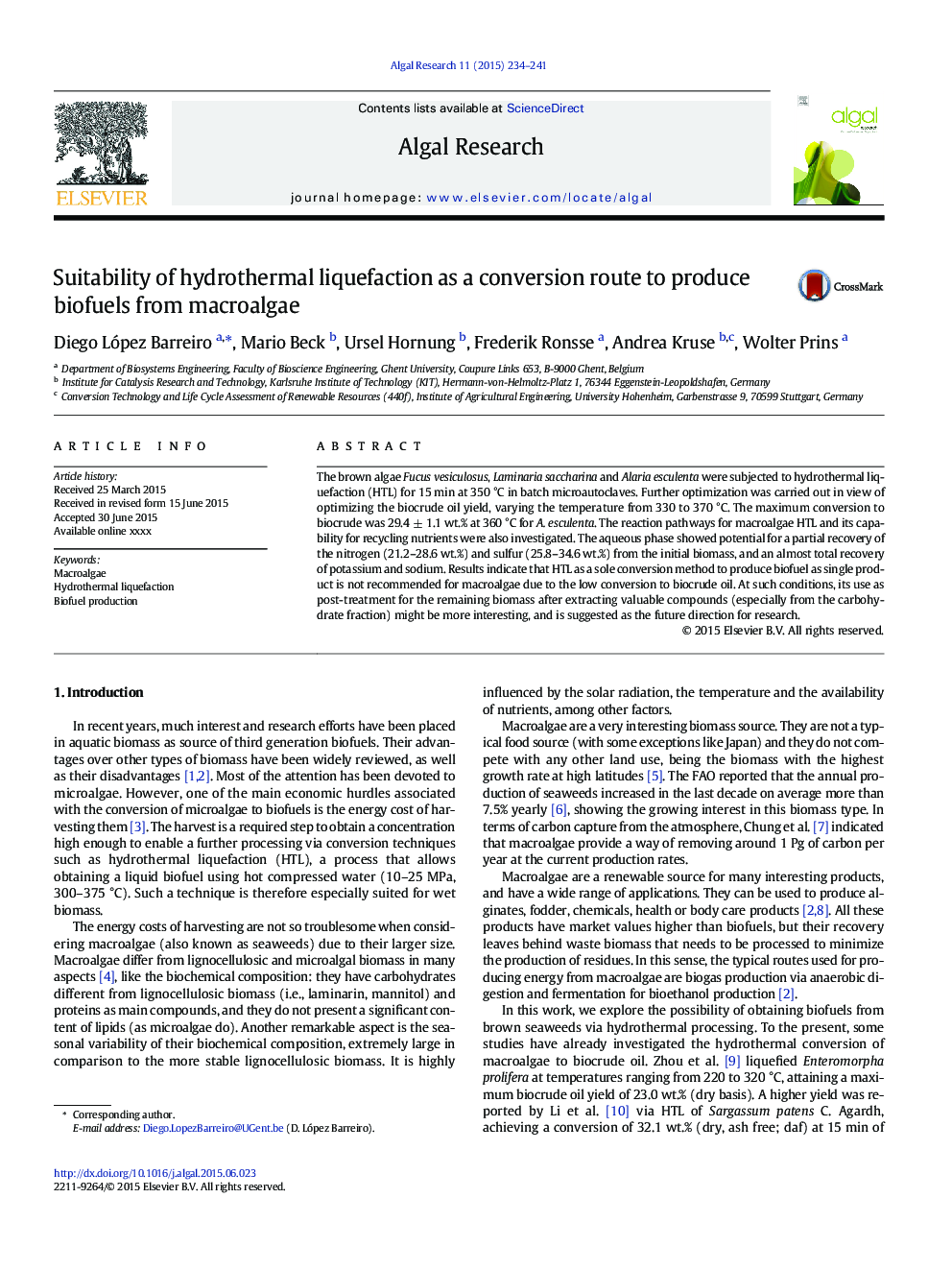| Article ID | Journal | Published Year | Pages | File Type |
|---|---|---|---|---|
| 8088111 | Algal Research | 2015 | 8 Pages |
Abstract
The brown algae Fucus vesiculosus, Laminaria saccharina and Alaria esculenta were subjected to hydrothermal liquefaction (HTL) for 15 min at 350 °C in batch microautoclaves. Further optimization was carried out in view of optimizing the biocrude oil yield, varying the temperature from 330 to 370 °C. The maximum conversion to biocrude was 29.4 ± 1.1 wt.% at 360 °C for A. esculenta. The reaction pathways for macroalgae HTL and its capability for recycling nutrients were also investigated. The aqueous phase showed potential for a partial recovery of the nitrogen (21.2-28.6 wt.%) and sulfur (25.8-34.6 wt.%) from the initial biomass, and an almost total recovery of potassium and sodium. Results indicate that HTL as a sole conversion method to produce biofuel as single product is not recommended for macroalgae due to the low conversion to biocrude oil. At such conditions, its use as post-treatment for the remaining biomass after extracting valuable compounds (especially from the carbohydrate fraction) might be more interesting, and is suggested as the future direction for research.
Related Topics
Physical Sciences and Engineering
Energy
Renewable Energy, Sustainability and the Environment
Authors
Diego López Barreiro, Mario Beck, Ursel Hornung, Frederik Ronsse, Andrea Kruse, Wolter Prins,
